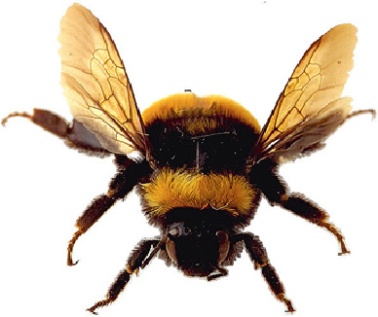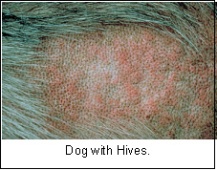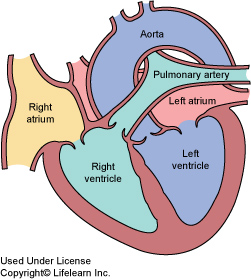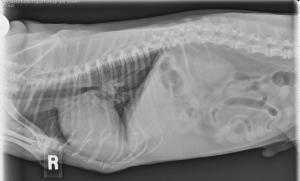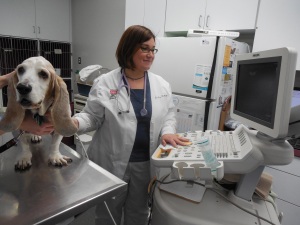Ticks in Dogs and Cats
What are ticks?
Although ticks are commonly thought of as insects, they are actually arachnids similar to scorpions, spiders and mites. All ticks have four pairs of legs (eight legs in total) as adults and have no antennae Adult insects by comparison have three pairs of legs (six legs) and one pair of antennae. Ticks are parasites that feed on the blood of their host, which can be an animal or a human.
Ticks are efficient carriers of disease because they attach firmly when sucking blood, feed slowly and may go unnoticed for a considerable time while feeding. Ticks take several days to complete feeding.
What is the life cycle of the tick?

Ticks have four distinct life stages:
1. Egg
2. Six-legged larva
3. Eight-legged nymph
4. Adult
Females deposit from 3,000 to 6,000 eggs on the ground. Adult ticks seek host animals and after engorgement on blood, they quickly mate.
Male ticks usually die after mating with one or more females, although some may continue to live for several months. Females die soon after laying their eggs in protected habitats on the ground. The life cycle requires from as little as 2 months to more than 2 years, depending on the species.
After the egg hatches, the tiny larva (sometimes called a “seed tick”) feeds on an appropriate host. The larva then develops (“molts”) into the larger nymph. The nymph feeds on a host and then molts into an even larger adult. Male and female adults feed and mate on the host; the female falls to the ground to lay her eggs, continuing the life cycle.
How did my pet get ticks?
Ticks wait for host animals on the tips of grasses and shrubs; they are not commonly found in trees. When the plant is brushed by a moving animal or person, the tick quickly lets go of the vegetation and climbs onto the host. Ticks can only crawl; they cannot jump or fly. Some species of ticks will crawl several feet toward a host. Ticks can be active on winter days if the ground temperatures are above 45 degrees Fahrenheit (7.2 degrees Celsius).
What are the different types of ticks?

There are two groups of ticks, sometimes called the “hard” ticks (Ixodidae) and “soft” ticks (Argasidae). Hard ticks, like the common dog tick, have a hard shield just behind the mouthparts (sometimes incorrectly called the “head”); unfed hard ticks are shaped like a flat seed. Soft ticks do not have the hard shield and they are shaped like a raisin. Soft ticks prefer to feed on birds or bats and are seldom found on dogs or cats.
Although there are at least 15 species of ticks in North America, only a few of these species are likely to be encountered by your pet. They include the:
1. American dog tick
2. Lone star tick
3. Deer or Blacklegged tick
4. Brown dog tick
Other tick species may be encountered in various regions. Ask your veterinarian if you need additional information about a specific species.
American Dog Tick
The American dog tick (Dermacentor variabilis) attacks a wide variety of hosts, including humans and dogs, but rarely infests homes. Adults are chestnut brown with white spots or streaks on their backs. Unfed adults are about 1/8-inch long. Engorged females become slate gray and may expand to a length of 1/2-inch. Larvae and nymphs feed mostly on small rodents, while adults feed on dogs, cattle, other animals and humans. These ticks are widely distributed throughout North America and are especially prevalent in the southern United States and in coastal and other humid areas. They are attracted by the scent of animals, and humans most often encounter them near roads, paths, trails and recreational areas. Although present all year round, American dog ticks are most numerous in the spring.
The American dog tick requires from three months to three years to complete a life cycle, and adult American dog ticks can live for up to two years without food! It is typically an outdoor tick and is dependent on climatic and environmental conditions for its eggs to hatch. This tick is a vector for Rickettsia rickettsii, a bacterial organism that causes Rocky Mountain Spotted Fever.
Lone Star Tick
Adult lone star ticks (Amblyomma americanum) are various shades of brown or tan. Females have single silvery-white spots on their backs and males have scattered white spots. Unfed adults are about 1/3-inch long, but after feeding females may be 1/2-inch long. Larvae and nymphs parasitize small wild animals, birds and rodents, while adults feed on larger animals such as dogs and cattle.
All three stages of the lone star tick will bite dogs and humans. These ticks live in wooded and brushy areas and are most numerous in the underbrush along creeks and river bottoms and near animal resting places. Lone star ticks are present throughout the year, but peak adult and nymphal populations may occur from March to May. A second nymphal peak may occur again in July or August, while peak larval activity is reached in mid-June or July. This tick is a vector for Ehrlichia chaffeensis, a bacterial organism that transmits human monocytic ehrlichiosis.
Deer or Blacklegged tick

All three active stages of the deer or blacklegged tick (Ixodes scapularis) will feed on a variety of hosts including dogs and people. After the eggs hatch in the spring, the very tiny larvae feed primarily on white-footed mice or other small mammals. The following spring, the larvae molt into pinhead-sized, brown nymphs that will feed on mice, larger warm-blooded animals and people. In the fall, they molt into adults that feed primarily on deer, with the females laying eggs the following spring. Adults are reddish-brown and about 1/8-inch long (or about one-half the size of the more familiar American dog tick).
These ticks are usually found in wooded areas along trails. The larvae and nymphs are active in the spring and early summer; adults may be active in both the spring and fall. The deer or blacklegged tick can transmit Lyme disease (Borrelia burgdorferi) and possibly ehrlichiosis to dogs and humans.
Brown Dog Tick
The brown dog tick (Rhipicephalus sanguineus, also known as the kennel tick) is found through most of the United States and can transmit ehrlichiosis. This tick feeds on dogs, but rarely bites people. Unlike the other species of ticks, its life cycle allows it to survive and develop indoors. In fact, the brown dog tick is the only tick species that can complete its entire life cycle completely indoors. The brown dog tick is found primarily in kennels or homes with dogs, where it may be found hiding in cracks, behind radiators, under rugs and furniture, and on draperies and walls.
The adult is reddish-brown and about 1/8-inch long, and usually attaches around the ears or between the toes of a dog to feed. After feeding, a female may engorge to ½-inch long. She then drops off the dog and crawls into a hiding place where she may lay as many as 3,000 eggs. This tick is tropical in origin and does not survive long, cold winters outdoors.
How can ticks be prevented?
There are many different types of tick preventatives available in the marketplace. There are effective monthly preventatives that are typically applied to the skin at the back of the neck and represent a convenient method of control for these external parasites. Your veterinarian will make specific recommendations to keep your pet parasite free.
What should I do if I find a tick on me or my dog?
If you are able to get to your veterinarian, it is advised to have he or she remove the tick to ensure it is done properly. If not, blunt tweezers is the preferred instrument used to handle the tick. Infectious agents may be contracted through mucous membranes or breaks in the skin simply by handling infected ticks. This is especially important for people who “de-tick” pets because ticks infesting dogs and other domestic animals can carry Lyme disease, anaplasmosis, ehrlichiosis or other diseases capable of infecting humans.
IMPORTANT: Grasp the tick as close to the skin surface as possible. Do not grasp the end of the tick. This reduces the possibility of the head detaching from the body upon removal.

Pull the tick straight out with a steady, even pressure. Do not twist or jerk the tick as this may cause the mouthparts to break off and remain in the skin, increasing the chances of infection. Continue applying steady pressure even if the tick does not release immediately. It may take a minute or two of constant, slow pulling to cause the tick to release.
After removing the tick, thoroughly disinfect the bite area and wash your hands with soap and water. Home remedies such as applying petroleum jelly or grease, or touching the rear of the tick with a hot match do not work effectively and are not recommended. These techniques cause the tick to salivate and can actually increase the chance of getting a disease.
After removing the tick, you may wish to preserve it in rubbing alcohol for identification. Be sure to label the container with information about the time and place where the tick bite occurred. This activity will help you to remember details of the incident, especially if a rash or other symptoms associated with Lyme disease appear later. This information will be of help to a veterinarian or physician diagnosing an illness.
Are ticks even that prevalent around here?
Yes. The tick population has been growing. See the link below for information about an increase in the black legged tick population in Ohio. Discuss with your veterinarian whether you and your pet inhabit an at-risk area for ticks, and whether your pet should be put on prevention.
http://veterinarynews.dvm360.com/dvm/Parasitology+Center/States-brace-for-new-Lyme-disease-threats-from-inc/ArticleStandard/Article/detail/762121?contextCategoryId=40534
Ernest Ward, DVM, with modifications and additions by Kristen Ferguson, DVM
© Copyright 2009 Lifelearn Inc. Used and/or modified with permission under license.

